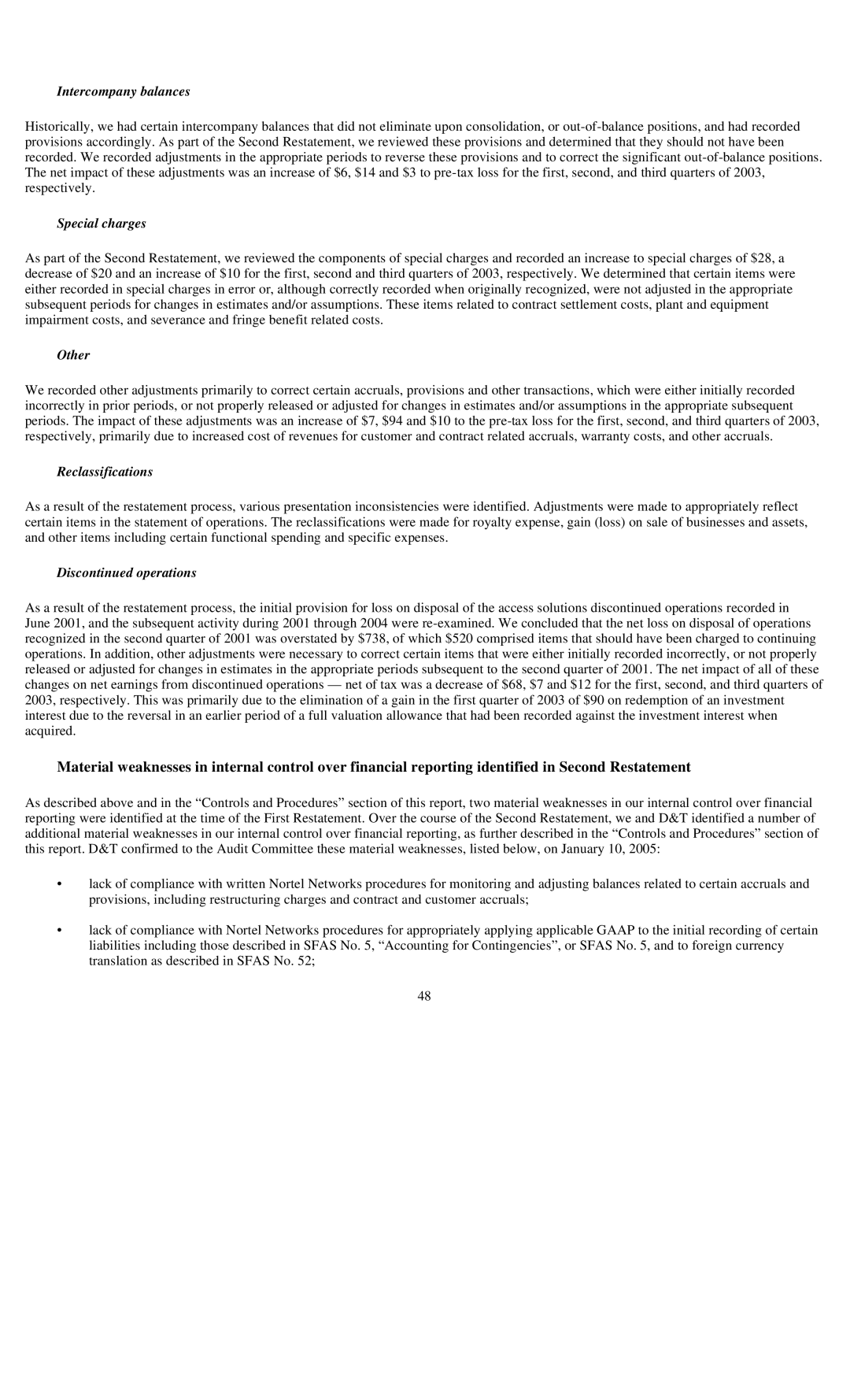Intercompany balances
Historically, we had certain intercompany balances that did not eliminate upon consolidation, or
Special charges
As part of the Second Restatement, we reviewed the components of special charges and recorded an increase to special charges of $28, a decrease of $20 and an increase of $10 for the first, second and third quarters of 2003, respectively. We determined that certain items were either recorded in special charges in error or, although correctly recorded when originally recognized, were not adjusted in the appropriate subsequent periods for changes in estimates and/or assumptions. These items related to contract settlement costs, plant and equipment impairment costs, and severance and fringe benefit related costs.
Other
We recorded other adjustments primarily to correct certain accruals, provisions and other transactions, which were either initially recorded incorrectly in prior periods, or not properly released or adjusted for changes in estimates and/or assumptions in the appropriate subsequent periods. The impact of these adjustments was an increase of $7, $94 and $10 to the
Reclassifications
As a result of the restatement process, various presentation inconsistencies were identified. Adjustments were made to appropriately reflect certain items in the statement of operations. The reclassifications were made for royalty expense, gain (loss) on sale of businesses and assets, and other items including certain functional spending and specific expenses.
Discontinued operations
As a result of the restatement process, the initial provision for loss on disposal of the access solutions discontinued operations recorded in June 2001, and the subsequent activity during 2001 through 2004 were
Material weaknesses in internal control over financial reporting identified in Second Restatement
As described above and in the “Controls and Procedures” section of this report, two material weaknesses in our internal control over financial reporting were identified at the time of the First Restatement. Over the course of the Second Restatement, we and D&T identified a number of additional material weaknesses in our internal control over financial reporting, as further described in the “Controls and Procedures” section of this report. D&T confirmed to the Audit Committee these material weaknesses, listed below, on January 10, 2005:
•lack of compliance with written Nortel Networks procedures for monitoring and adjusting balances related to certain accruals and provisions, including restructuring charges and contract and customer accruals;
•lack of compliance with Nortel Networks procedures for appropriately applying applicable GAAP to the initial recording of certain liabilities including those described in SFAS No. 5, “Accounting for Contingencies”, or SFAS No. 5, and to foreign currency translation as described in SFAS No. 52;
48
